This is the first weekend I've not had something scheduled, so I removed the ribbon and stripped off the shell and inspected the crud in detail.
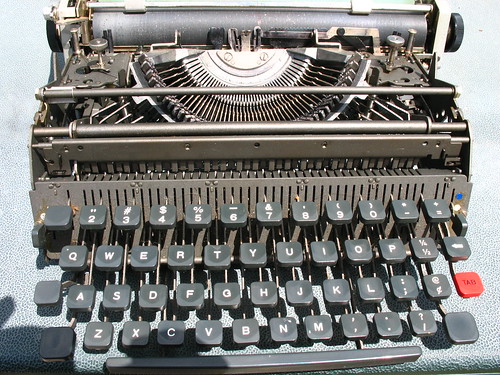
Removing the shell of these machines is pretty easy. Take off the feet first to remove the bottom panel: I used a binder clip to get a better purchase on them. The panel just hinges off with the feet gone. The metal shell removes with four screws: two under the ribbon cover, another two at the rear underneath the carriage (you'll have to move it to the sides to get at them.) The shell comes off in one piece -- start on the left side so you don't get caught up in the carriage lock lever.
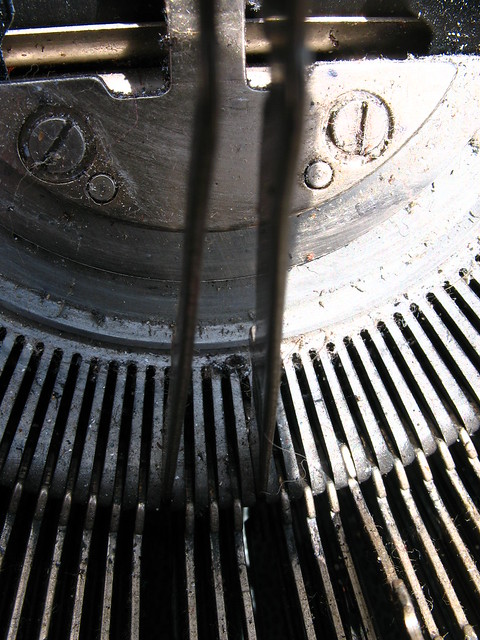
We have a rectangular bucket that has the good fortune to fit our sink and a portable typewriter with ease. Fill with warm water and a squirt of mild dish soap, and ease the typewriter inside.
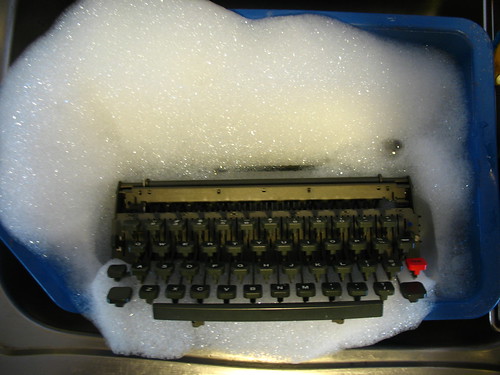
Lift and lower the machine a few times to get the water to run through. I turned it so each of the four sides was "up" and repeated this for a while, then rinsed it off with the sprayer hose on our sink.
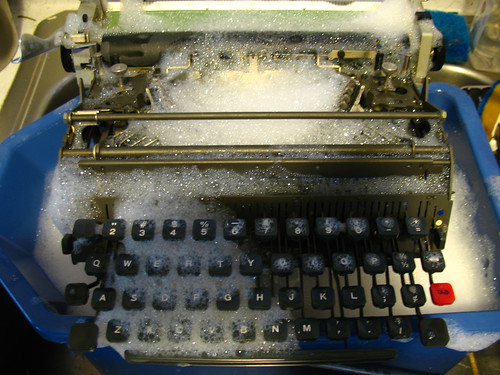
Now place outside in a sunny spot to dry!
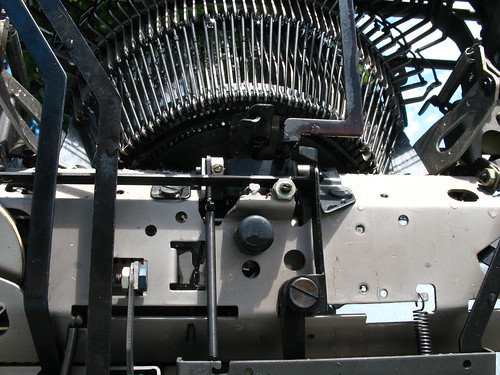
I see a few areas that the dip-n-dunk missed, but they're reachable with a cotton swab. But now the cracks and crevices are crudless. I also scrubbed off the shell and the bottom panel with soap and a plastic scouring pad and placed them outside to dry.
Final step is to add a dab of sewing machine oil to the rails and at the joints of the type-bar linkages, and then wrestle the shell back on (they always seem to come off easier than they go on.) Maybe I'll put a little caranuba wax on some of the surfaces too, just to shine it up. After 30 years, this little gal deserves it.

7 comments:
OK, now I gotta totally do mine up the same way. God bless Mr. Clemens and his native ingenuity.
Nice details on the typewriter deconstruction. I'm hoping to get my hands on a Lettera 32 at some point in the future, so it's certainly helpful to hear how they break down for cleaning.
I did something very much like this with my Remington Quiet-Riter and did it ever help! I also had used soft scrub on the crinkle paint--I do hate cleaning crinkle paint--but it works.
I need to find an Olivetti at a church sale now! D:
Many thanks for this, really helpful. Just rescued a Remington portable from an attic and I might consider giving it a bath like you did.
I should add that you need to be extra-careful if you're dunking a typewriter with the glass keys -- they are likely not water-tight, and seepage can get in there and discolor the paper used as the key legends.
You can still dunk, just with more care and always trying to keep the keys out of the water.
I'm having a lot of trouble getting the bottom cover off of my lettera 32, can you describe in more detail how you removed the back feet? It seems like the rear panel is attached to the bottom cover via some rubber plugs that are press-fitted... I don't want to force the thing open for fear of damaging it. Any ideas?
Lance, you're exactly right. I used a metal binder clip to get a better purchase on the feet. With the clip on each foot, I rocked them from front to back (relative to the typewriter) to pop them off the metal prongs that hold them in place. Don't try to pull them straight off, as I suspect that will tear the rubber. Imagine you're pulling off a shoe and you have the right idea: you need to slip it off the "heel" first, and then the "toe."
Post a Comment